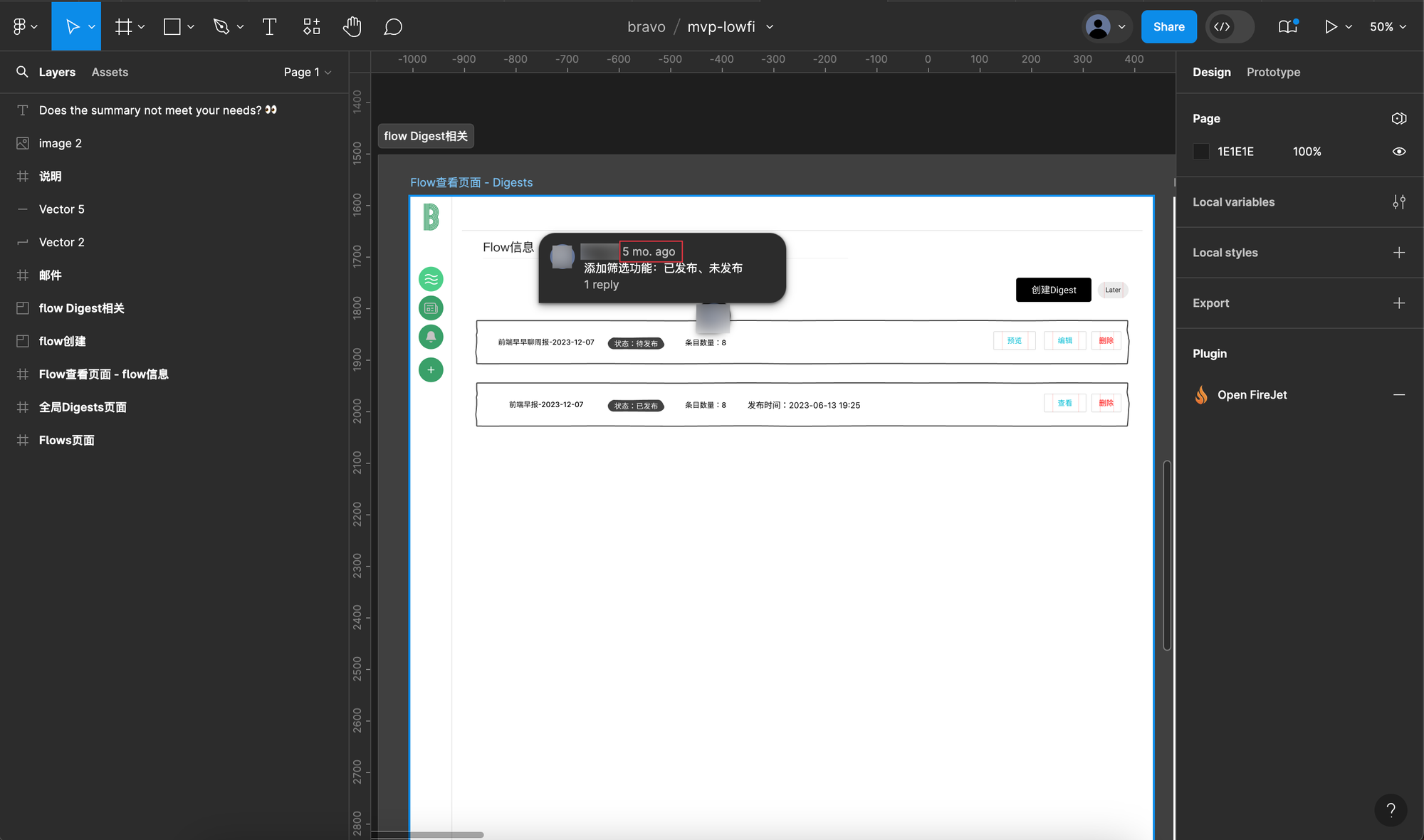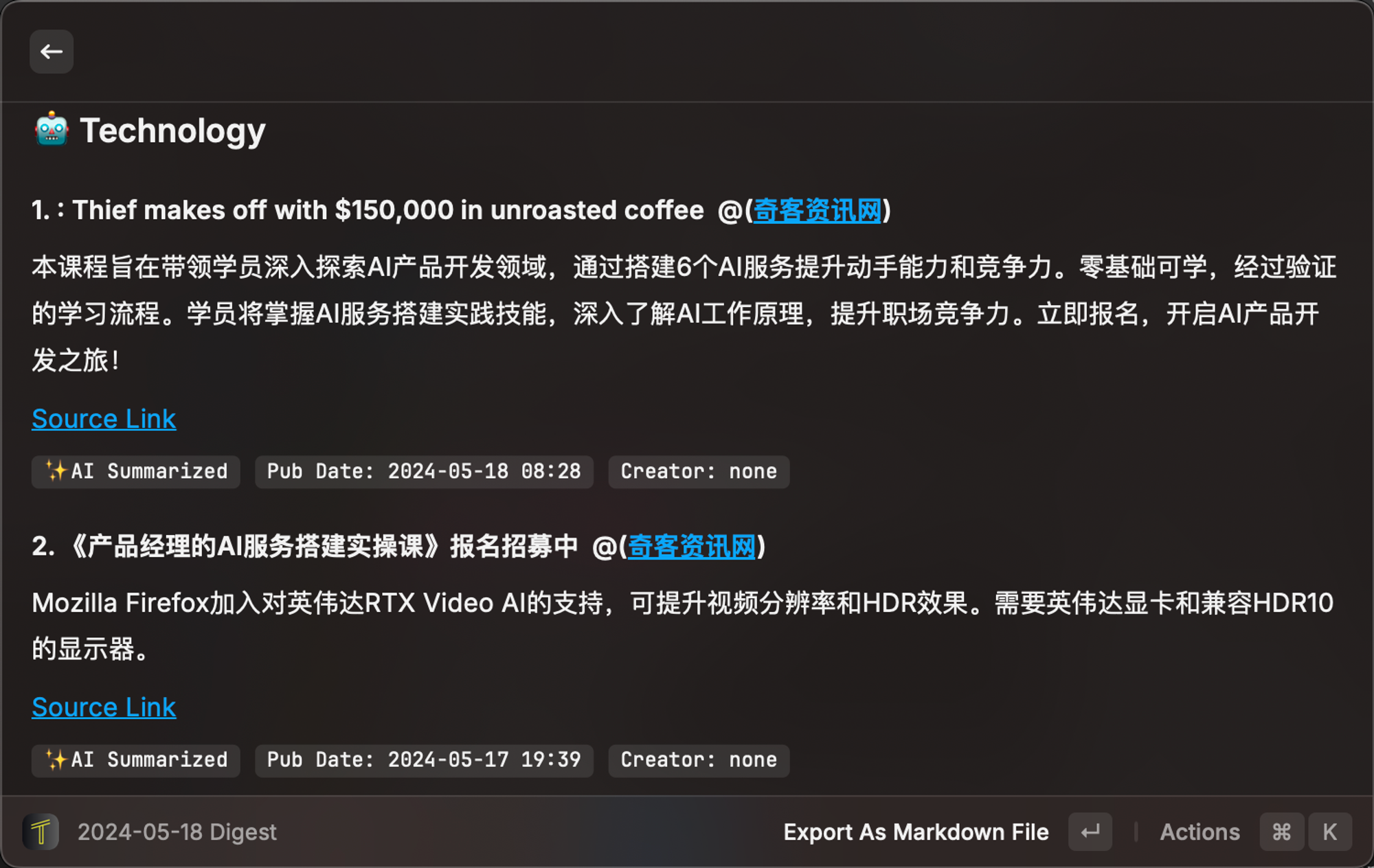Tackling Information Overload: My Personal Journey in Creating an AI-Powered News Tool
The Beginning of the Need
I have ADHD (Attention Deficit Hyperactivity Disorder) and experience a certain degree of attention deficit. When communicating with others or reading, I often get distracted easily. Sounds can also disrupt my concentration. One memorable instance was in high school when I asked my teachers to allow me to wear headphones during every exam, including the college entrance exam, where I even used one hand to cover my ear. These challenges made it difficult for me to obtain sufficient and effective information from daily life, gradually turning me into someone deprived of information.
After graduating from university, I worked as a front-end developer at Netease, a leading Chinese internet company. My colleagues were talented, and I often found myself unable to keep up with their conversations and thought processes, which increased my information anxiety. I began trying to address my symptoms through meditation and psychological practices while optimizing my information acquisition process.
Initially, I used news apps to expand my information sources, but I found their algorithmic recommendations unfriendly. They often exploited my weaknesses, triggering FOMO (Fear of Missing Out) or satisfying my desires, ultimately leaving me feeling out of control and frustrated.
Until I discovered RSS, which gave me hope. Simply put, RSS is a way to aggregate information without ads and algorithmic interference. You can subscribe to and read information from different channels on any RSS reader that supports subscriptions. However, it’s important to note that the influence of ads and algorithms does not completely disappear, depending on how "pure" the information source is. Here’s a recommended good introduction to RSS.
So, I started building my own secret RSS garden.
Initially, I used RSS reading services like Jike, Feedly, and Inoreader.
But that wasn’t enough. I started building my own information retrieval flow: rsshub + rsshub radar + freshrss + fluent reader + unread. rsshub is for finding RSS sources, radar for detecting website RSS feeds, freshrss for storing data and exposing the Fever API so that readers (fluent reader, unread) can subscribe with one click.


This indeed gave me more control.
However, I found that RSS is not a silver bullet and encountered some new problems along the way.
Many sources only provide titles or truncated summaries, requiring me to click through to see if it’s the content I want. Often, I realize halfway through that it’s not what I want, making me feel like I wasted my time.
When I don’t read for a while, a lot of information accumulates. Although I can clear it with one click, there’s a huge psychological burden before I start reading again. It’s like the 200 overdue to-dos silently lying in my to-do list; I can’t clear them all at once and need to think about how to handle them.
As the number of subscribed sources increases, reading during fragmented times makes me feel overwhelmed by a torrent of information, exacerbating my anxiety. It’s like an endless social media feed.
But I couldn’t just give up. I feared falling behind and wanted to keep up with trends and stay informed about my areas of interest.
With the advent of ChatGPT, and OpenAI’s API, I saw new possibilities.
Early Solutions
So, in March 2023, I spent a weekend writing a script. The initial version did only one thing: fetch a specified list of RSS feeds (then related to frontend development), summarize them using the OpenAI API, generate a Markdown list, and push it to my company's group via webhook. On Monday at 9 AM, I manually triggered the program, pushed the content to the frontend group, and sparked a lively discussion.

The tool gradually "went viral," and colleagues from other teams also wanted me to include them. So, I refactored the entire code to support information flows for multiple topics. From the flows folder, you can see that the business, product, and backend teams also started using the tool. It eventually became a company routine; if I was late (since I was running it on a local machine timer 😂), colleagues would urge me 🫠.

Gradually, my information anxiety eased significantly. Apart from social media, I only needed to read readhub (a tech news digest service) when I woke up and my information digest at 9:30 AM, which almost eliminated my information anxiety for the day.
That’s when I planted the seed of turning it into a product, making it more refined and widely used. But at that time, I was just starting out as a manager at a startup, taking on infrastructure work and a lot of frontline development, so I had almost no time to further envision it and could only maintain the status quo.
Building the Product as an Indie Developer
Six months later, I got the chance, although it wasn’t good news: due to funding issues, the company had to let us choose between a pay cut or leaving at the end of October. So, I followed my heart and transitioned from a novice leader to a indie developer noob. 🫠
I first took a month off, and from December, started researching other products and discussing ideas with friends. My thoughts became clearer, and I designed the first version of the MVP. Looking back now, about 70% of the core business concepts I outlined back then align with the current product, thanks to extensive research and communication at the time.

However, I realized this was a huge project. Without quick feedback, I might struggle to persist.
I began to think about ways to quickly release an MVP and validate it. I thought of Raycast. Although Raycast doesn’t have many users, they are highly engaged and love tinkering. Perhaps they’d be interested in tinkering with AI + RSS.
Developing a Raycast extension is very simple, almost no need to worry about UI, just focus on business logic and user flow.
So, I spent two days developing the first version. However, it was far from usable. It wasn’t until two weeks later that I released what I considered a basic, usable product: able to subscribe to RSS feeds and generate AI summaries into a digest at a specified time each day.


I was thrilled to share it with Raycast’s CEO, Thomas, and was lucky to receive positive feedback:

One day, traffic spiked unexpectedly, with 40 new registrations. A friend reminded me that I had been recommended by Moonshot, a major Chinese AI company.
The highlight for me was a Ukrainian user who has been using my extension since its early days and continues to provide feedback 🫡:

To date, without much promotion, the extension has accumulated over 300 users through word of mouth and Raycast’s extension system search. By the way, there are only about 1000 extensions on Raycast, so with precise keywords, it ranks high in search results. For instance, Tidyread ranks second for "RSS," third for "read," and eighth for "AI."

Building a Team, Joining an Incubator, and Starting Formal Entrepreneurship
After some time, community users and potential users (those interested in the product concept) started providing feedback. I realized that the Raycast extension couldn’t meet their needs. Raycast has limitations such as compatibility, customization constraints, and small viewport.
Compatibility means that to use the extension, one must be a Mac user and a Raycast user, which limits the audience.
Customization is restricted by Raycast’s interface openness and extension presentation style. I understand their goal is for developers to create extensions with a consistent style for specific lightweight scenarios. But this limits the product’s potential, such as timers needing to be manually activated and content not being able to be displayed in a card format.
The small viewport significantly impacts the reading experience.
Inspired by a user and Feedbro, and after surveying nine seed users, I decided to launch a product addressing these issues, primarily as a browser extension. Why choose a browser extension over a web app? There are several reasons:
Browser extensions can scrape website content in the first person without exposing user privacy, making it very convenient for future information source extraction.
User rights protection. Observing Product Hunt, I saw people complaining, "Another SaaS? Some services I subscribed to have already shut down, and my money was wasted." A local-first approach ensures that even if the team disbands, the product can still be used.
Future features tightly integrated with websites, like site RSS detection and interactive conversion of web pages to RSS.

Thanks to prior accumulation and positive feedback, I gained considerable confidence and momentum. I planned to start immediately, but before getting my hands dirty, I reviewed the product and marketing plan based on recent insights and previous design.
Intuition told me that this would be a complex system in the long run, and I couldn’t push it forward quickly on my own.
Moreover, product operation and promotion require a lot of energy and expertise, far beyond what I can provide alone.
So, starting in late February, I began looking for operational and development partners in the Chinese community.
To date, we have formed a well-coordinated team of seven: three developers (including myself) and four operations.
By late March, we successfully joined the Chuhaiqu Accelerator, becoming a semi-professional team.
After over a month of development, the MVP version of the Tidyread Chrome extension was introduced to the team on April 22.
After a week of internal testing, on April 29, my 30th birthday, we started beta testing with seed users in the form of a local software package—a special birthday gift!
However, local software packages are frustrating. Each time I fixed a bug and repackaged, the local package ID would change, causing past data to become unusable, and installation was very cumbersome. So we decided to publish it to the Chrome Web Store as soon as possible. Finally, on May 5, it passed the review and was officially released to the Chrome Web Store.
After two weeks of beta testing with seed users, the product's stability and usability improved significantly. Some of this usability and stability was achieved by spending money, yes, we subscribed to Supabase and Vercel’s paid plans 😝.
So, it’s time for Tidyread to meet everyone!
Next Steps
We decided to look for angel users globally.
If you face:
Information anxiety
Information overload
Inefficient news reading
If you want to:
Establish a sense of order in your news reading
Improve news reading efficiency
Communicate and share information sources with other high-quality users
You are welcome to join our first global beta test. All beta users will receive 1 million free tokens.
The first 100 users will also get a lifetime discount. For more details, please refer to the beta testing guide.
How to participate:
Visit our official website and click the Join Waitlist button to fill out the form (about 2 minutes). We will receive your submission notification and will send the beta invitation email and tokens as soon as possible. 🫡

Here are some product screenshots for a visual feel:


Thank you for reading to the end! We can’t guarantee the product will fully meet your taste and requirements, but our goal is to serve those facing these problems and wanting to create customized information digests. So we look forward to your questions or ideas to help us make Tidyread more useful 🥰.
Additionally, if you want to communicate with the core team or with other users interested in information retrieval, join our Discord for a chat! Or feel free to contact us via email: [email protected].

